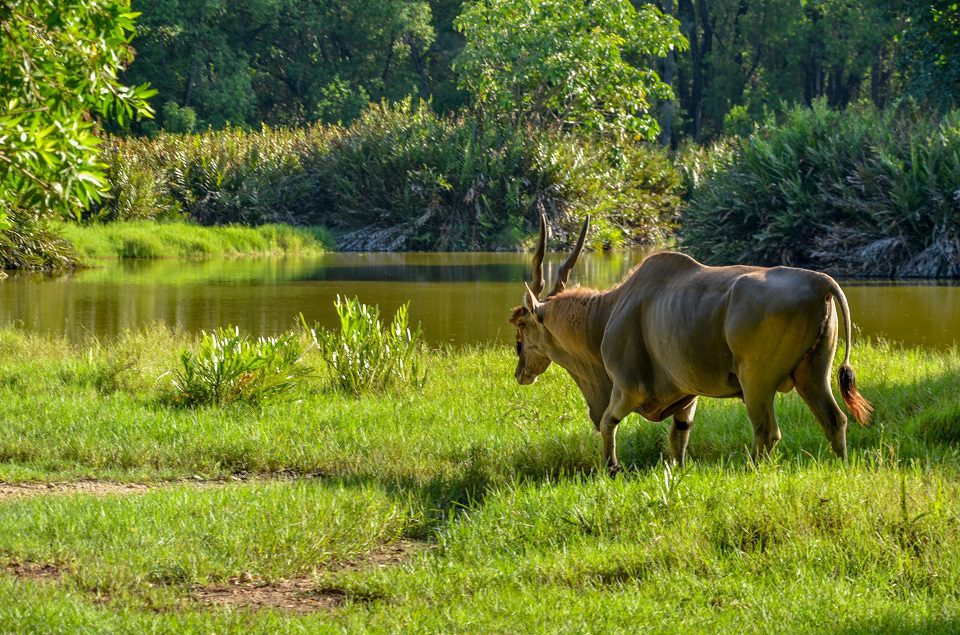
Several strands of Kenya’s past meet at Mombasa’s Fort Jesus junction. On one side is the entrance to the medieval Arab town, and on the other the colonial-style members-only Mombasa Club. Oddly, the statue in the traffic island here immortalises not some great historic Kenyan figure, but the local tradition of roadside coffee or kahawa, with a giant golden coffee pot. Mombasa was settled by the Swahili people nearly 2,000 years ago, but its customs have been shaped by the monsoon winds that brought maritime traders from near and far. Kenya’s second-largest city after Nairobi bears the cosmopolitan influence of its Bantu, Arab, Indian, Persian, Portuguese, and British inhabitants. Today, people are still drawn to Mombasa from all over the world, for its bounteous beaches, the warm waters of the Indian Ocean, and its access to some of the world’s best national parks teeming with wildlife.
OLD TOWN – I rendezvous with Taibali Hamzali, an architect with a yen for heritage conservation, who has been working towards preserving the buildings and ethos of old Mombasa. A friend of a friend, Taibali grew up in the Old Town and couldn’t be a better guide to its intimate alleyways. We convene at Fort Jesus, a 16th-century citadel and a UNESCO World Heritage Site built by the Portuguese and a popular meeting point for walking tours. The Old Town Tourist Guides Association, with its reliable registered guides is located here. A map of the Old Town at the entrance to Ndia Kuu, or Main Street, indicates various walking routes. I marvel at the dainty single-storey houses with balconies and balustrades, ornately carved doors, and even some art deco architecture. The scene is reminiscent of small-town colonial India Taibali tells me that indeed this waterfront settlement is a rich amalgam of the Arab-Omani, Indian, and British cultures that touched these shores, and left their mark on the country.
Though mostly privately owned, the residential buildings are bound by heritage conservation laws. Still, some have been sold to unscrupulous builders and demolished. I am awed by the fretwork balconies and the teak doors with brass studs. Adorned with inscriptions of Koranic calligraphy and floral vines, these were the handiwork of the Kutchi craftsmen who were early immigrants from India. Meandering through lanes flanked by heritage homes, we come across the 16th-century Mandhry Mosque, believed to be the oldest mosque still in use in the city. Its obelisk-like minaret once served as a beacon to medieval Arab dhows, guiding them into the Old Port. “Old Town Mombasa grew as an Islamic trading post,” says Taibali, “and by the 1900s, finely-crafted stone buildings had been constructed along the main streets.”
The Old Post Office was constructed in 1899, in the British colonial style of arched windows and rich plasterwork decoration. It is from here that Indian indentured labourers sent news and money to their families. The post office is at Government Square, one of Old Town’s few open spaces and the perfect vantage from which to watch boats dotting the harbour. According to a plaque, such “small coastal trading vessels” sailed up and down Africa for thousands of years. I am intrigued by an unmarked door on a periphery wall abutting the ocean and Taibali reveals a darker side to the old port’s history: It was a departure point for slaves being sent to Zanzibar, East Africa’s main slave market.
Further north stands majestic Leven House, seat of the erstwhile British colonial administration, where missionaries such as Johann Ludwig Krapf, and 19th-century explorers John Speke and Richard Burton once stayed. Named after a British ship which ran anti-slaving patrols off the coast of the city, the renovated building now houses the Mombasa Old Town Conservation Office. Outside, in the narrow lanes, Swahili women in loose floor-length buibui gowns or boldly floral patterned khangas (sarongs) and men wearing kikois (lungis) and kanzus (long white tunics) sell souvenirs to tourists. Most of the buildings have curio shops on the ground floor.
Though kitschy, many of these shops or dukas have good local handicrafts and items such as brass coffee pots. I mull over my day while sipping kahawaby a painted glass window in the Jahazi Coffee House. More than a cafe, Jahazi is a cultural meeting ground. Like other words in Swahili which have been borrowed from Persian, Arabic, or Hindustani, jafezs- is a familiar term meaning ship. With its carved wooden benches and tables from Lamu, Persian carpets and settees, it offers the ideal setting from which to watch the world go by. Make sure you get a plate of crisp Swahili samosas and kahawa, the signature spice and ginger-laced coffee. I imagine a traditional coffee seller with his trademark brass coffee pot and brazier full of coals peddling the strong brew to the idlers unwinding by the ocean.












